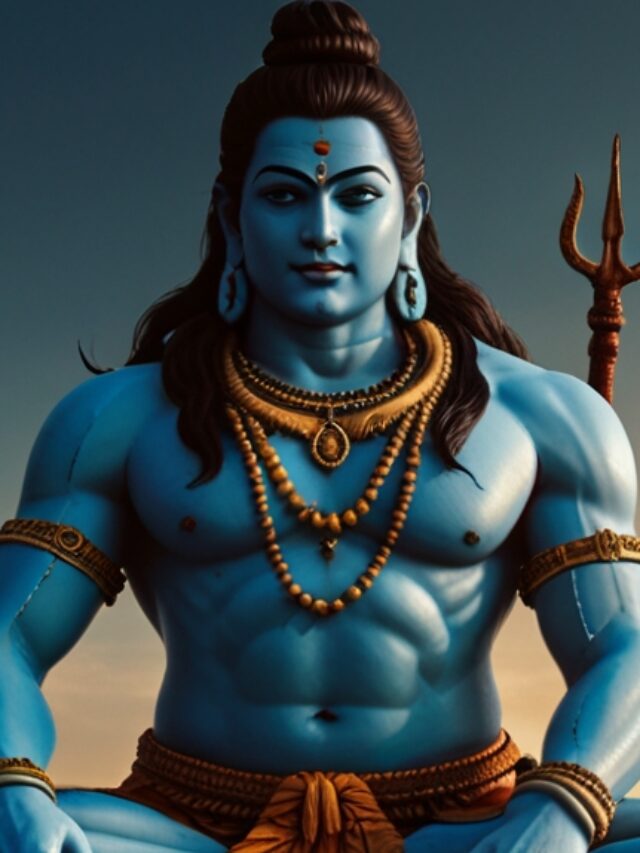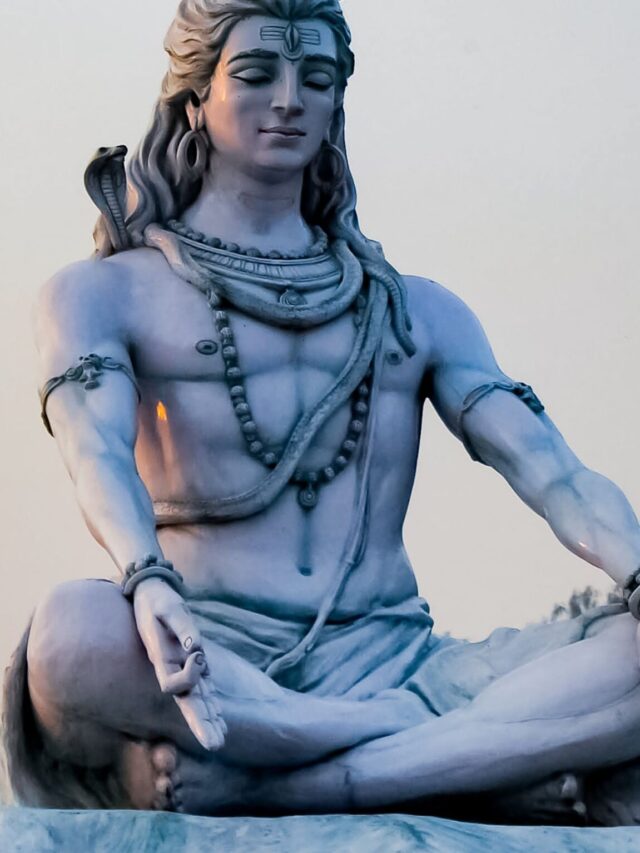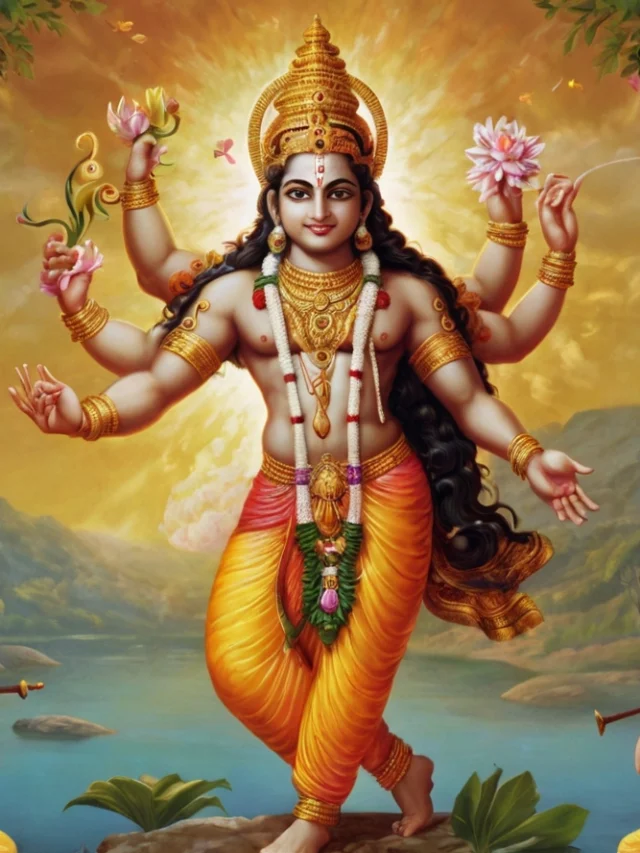Embark on an unforgettable journey through Sacred Story: The Mahabharata, delving into a timeless epic that weaves together gods, heroes, and profound moral lessons, capturing the essence of ancient Indian wisdom and spirituality.
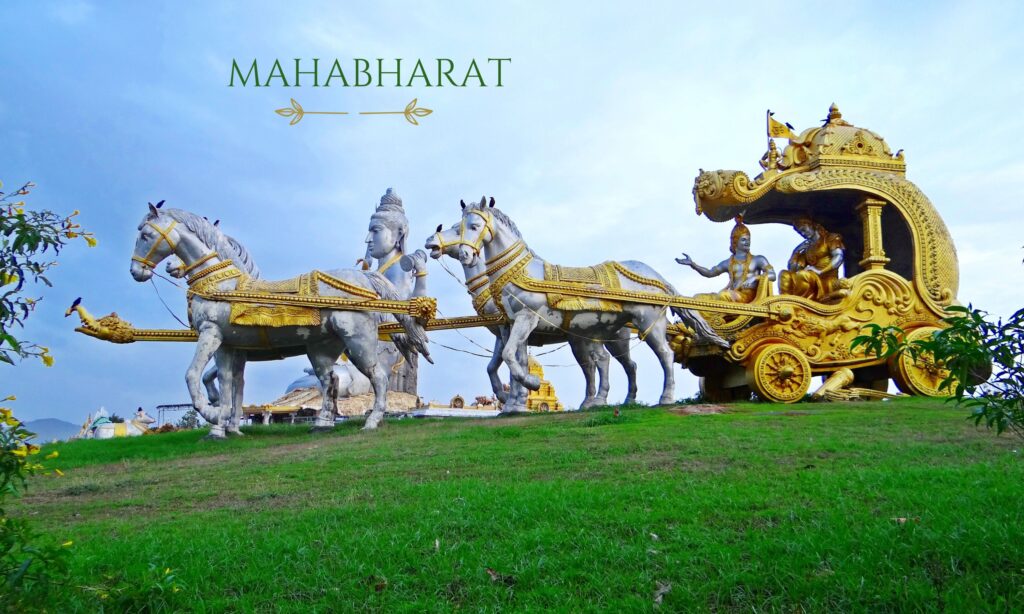
The Mahabharata, traditionally attributed to the sage Vyasa, is one of the two major Sanskrit epics of ancient India, alongside the Ramayana. This monumental work is not simply a story; it’s a vast and complex tapestry woven with mythology, philosophy, war, love, and loss.
The Central Conflict
The Mahabharata centers on the Kurukshetra War, a devastating conflict between two branches of the same family: the righteous Pandavas and the power-hungry Kauravas. The war erupts from a dispute over a kingdom, and the epic delves into the moral dilemmas of war, the consequences of greed, and the importance of upholding dharma.
Beyond the Battlefield
The Mahabharata is much more than just a war story. It explores themes of love, loss, friendship, and the complexities of human nature. The epic includes philosophical discussions on statecraft, the nature of reality, and the meaning of life. Through its diverse characters, from the noble Krishna to the cunning Shakuni, the story offers timeless lessons in human behavior.
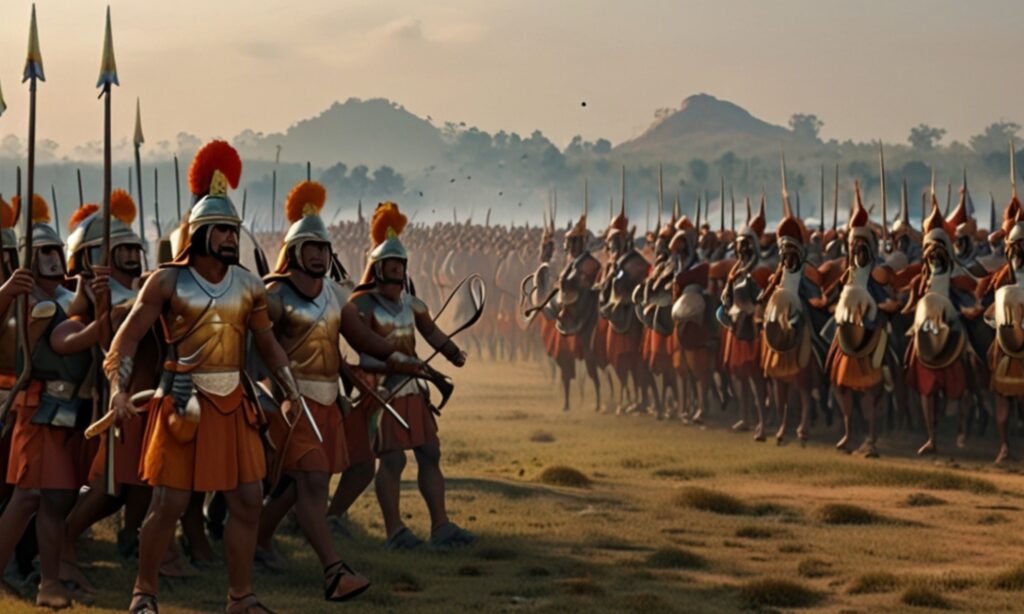
Vedavyasa
The Mahabharata, one of the most revered and voluminous epics in world literature, is traditionally attributed to the sage Vyasa, also known as Vedavyasa or Krishna Dvaipayana Vyasa. Vyasa is considered both the author and a major character within the epic.
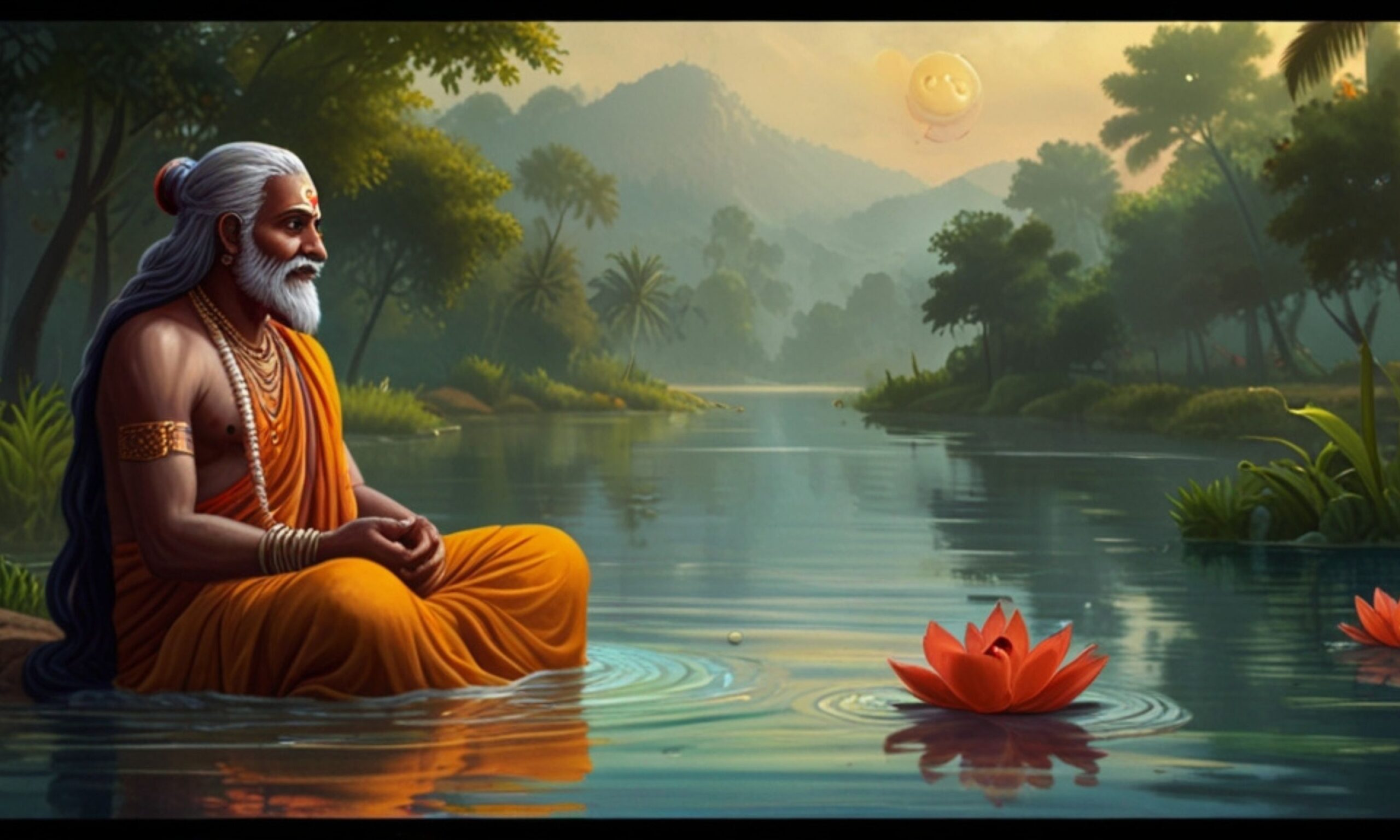 Vedavyasa
Vedavyasa
According to Hindu tradition, Vyasa was born to the sage Parashara and a fisherwoman named Satyavati. He was blessed with great wisdom and intellect from birth. Vyasa is credited not only with composing the Mahabharata but also with compiling and arranging the Vedas, the sacred scriptures of Hinduism. It’s believed that he dictated the Mahabharata to the god Ganesha, who wrote it down using his tusk as a pen.
Vyasa’s role in the Mahabharata extends beyond being its author. He plays a pivotal role in the narrative as the grandfather of both the Pandavas and the Kauravas, serving as a mentor and guide to many of the characters. His presence is felt throughout the epic, particularly in the framing story where he narrates the Mahabharata to the king Janamejaya, great-grandson of the Pandavas.
While Vyasa is traditionally regarded as the primary author of the Mahabharata, it’s important to note that the epic evolved over centuries through oral tradition before being compiled into its written form. The Mahabharata is not solely the creation of one individual but rather a collective effort of countless storytellers, sages, and poets over many generations.
Thus, while Vyasa is honored as the literary genius behind the Mahabharata, the epic itself is a product of the collective wisdom and creativity of ancient Indian civilization, embodying the essence of its culture, philosophy, and spiritual heritage.
Chapters in Mahabharata
The Mahabharata, an epic of monumental proportions, consists of numerous chapters, each contributing to its rich and multifaceted narrative. The exact number of chapters can vary depending on the edition and translation, but the critical edition of the Mahabharata, compiled by scholars under the guidance of the Bhandarkar Oriental Research Institute in Pune, India, contains around 100,000 verses spread across 18 major sections, known as parvas.
These 18 parvas encapsulate the various episodes, stories, and teachings found within the Mahabharata. They are:
- Adi Parva (The Book of the Beginning)
- Sabha Parva (The Book of the Assembly Hall)
- Vana Parva (The Book of the Forest)
- Virata Parva (The Book of Virata)
- Udyoga Parva (The Book of the Effort)
- Bhishma Parva (The Book of Bhishma)
- Drona Parva (The Book of Drona)
- Karna Parva (The Book of Karna)
- Shalya Parva (The Book of Shalya)
- Sauptika Parva (The Book of the Sleeping Warriors)
- Stri Parva (The Book of the Women)
- Shanti Parva (The Book of Peace)
- Anushasana Parva (The Book of Instructions)
- Ashvamedhika Parva (The Book of the Horse Sacrifice)
- Ashramavasika Parva (The Book of the Hermitage)
- Mausala Parva (The Book of the Clubs)
- Mahaprasthanika Parva (The Book of the Great Journey)
- Svargarohana Parva (The Book of the Ascension to Heaven)
These parvas vary in length, with some containing only a few chapters while others are much more extensive. Additionally, there are numerous sub-stories, digressions, and teachings embedded within these parvas, contributing to the vastness and complexity of the Mahabharata’s narrative.
Overall, the Mahabharata’s chapters are not just a collection of stories but a comprehensive exploration of human values, ethics, and the eternal struggle between righteousness and unrighteousness, making it a timeless and revered epic in world literature.
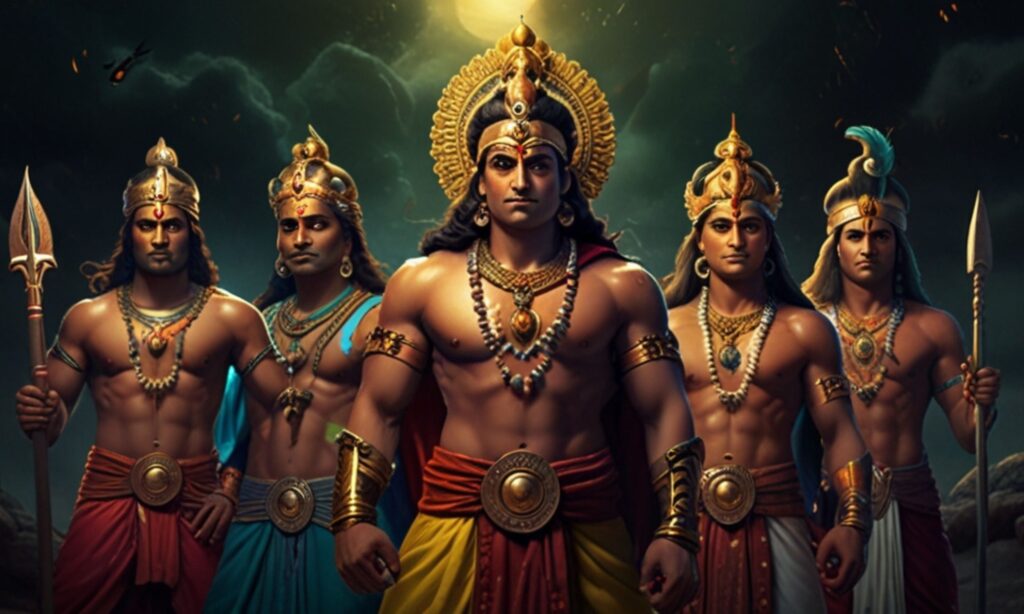
Characters of Mahabharata
The Characters
The Pandavas:
- Yudhishthira: The eldest Pandava, known for his piety and adherence to dharma.
- Bhima: The strongest and fiercest Pandava warrior.
- Arjuna: The most skilled archer, guided by Lord Krishna during the war.
- Nakula and Sahadeva: The twins, known for their swordsmanship and wisdom.
The Kauravas:
- Duryodhana: The eldest Kaurava, consumed by jealousy and ambition.
- Karna: A powerful warrior who sided with the Kauravas despite being a Pandava by birth.
Lord Krishna:
- The eighth avatar of Vishnu, acting as a charioteer, advisor, and embodiment of dharma for the Pandavas.
Myth vs. History:
- Separating historical fact from fiction in the Mahabharata is challenging.
- The epic portrays gods, demons, and fantastical elements alongside potentially real events and figures.
- Historians believe the core narrative might be based on a real conflict, but the details are likely embellished.
The Kurukshetra War: A Clash of Duty, Kinship, and Destiny
The Kurukshetra War, also known as the Mahabharata War, stands as a pivotal event in Indian mythology. This epic conflict, chronicled in the Mahabharata, is a tale of duty, kinship, and the devastating consequences of war.
The Seeds of Conflict
The war arises from a brewing rivalry between two branches of the same family – the Pandavas and the Kauravas. The Pandavas, five virtuous brothers, are the rightful heirs to the throne of Hastinapura. However, their envious cousins, the Kauravas, led by the power-hungry Duryodhana, conspire to usurp their birthright.
Dharma vs. Adharma
The central conflict goes beyond mere land. It’s a clash between dharma (righteous duty) and adharma (unrighteousness). The Pandavas, despite facing numerous injustices, strive to uphold dharma, while the Kauravas resort to deceit and manipulation. This struggle between right and wrong forms the core of the epic.
The Battlefield of Kurukshetra
After years of failed attempts at reconciliation, war becomes inevitable. The battlefield of Kurukshetra becomes the stage for a colossal clash. On one side stand the Pandavas, supported by Krishna, the divine charioteer and counselor. Against them are the Kauravas, backed by formidable allies.
Eighteen Days of Carnage
For eighteen days, the battlefield witnesses a devastating spectacle of war. Great warriors like Bhishma, Arjuna, and Karna engage in legendary duels. Loyalties are tested, and friendships are broken as the tide of the war shifts back and forth.
The Bhagavad Gita and the Dilemma of War
Within this grand narrative lies a poignant episode – the Bhagavad Gita. On the eve of the battle, Arjuna, the most skilled Pandava warrior, is filled with doubt and despair. Krishna, in his divine form, delivers the Bhagavad Gita, a philosophical discourse on duty, action, and the nature of reality. This discourse transcends the war’s context, offering timeless wisdom applicable to life’s struggles.
The Aftermath and Legacy
The war ultimately ends with the Pandavas’ victory, but at a heavy cost. Both sides suffer immense losses, leaving a legacy of grief and destruction. The Kurukshetra War serves as a cautionary tale, reminding us of the devastating consequences of war and the importance of upholding dharma. It also explores themes of duty, family, and the complexities of human nature, ensuring its place as a timeless epic in Indian mythology.

